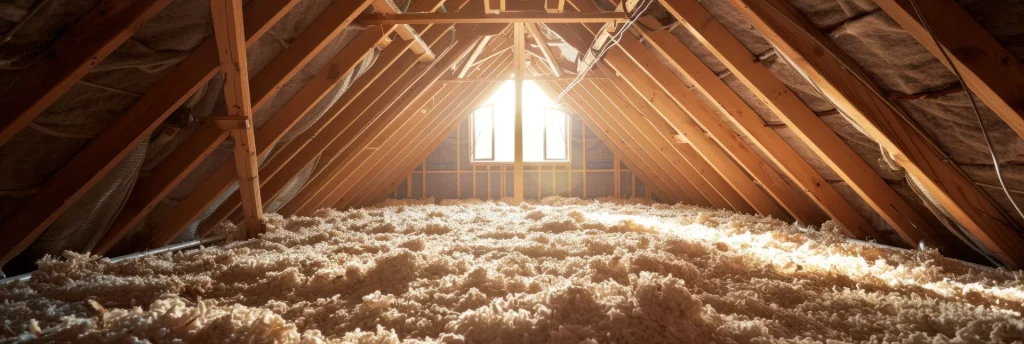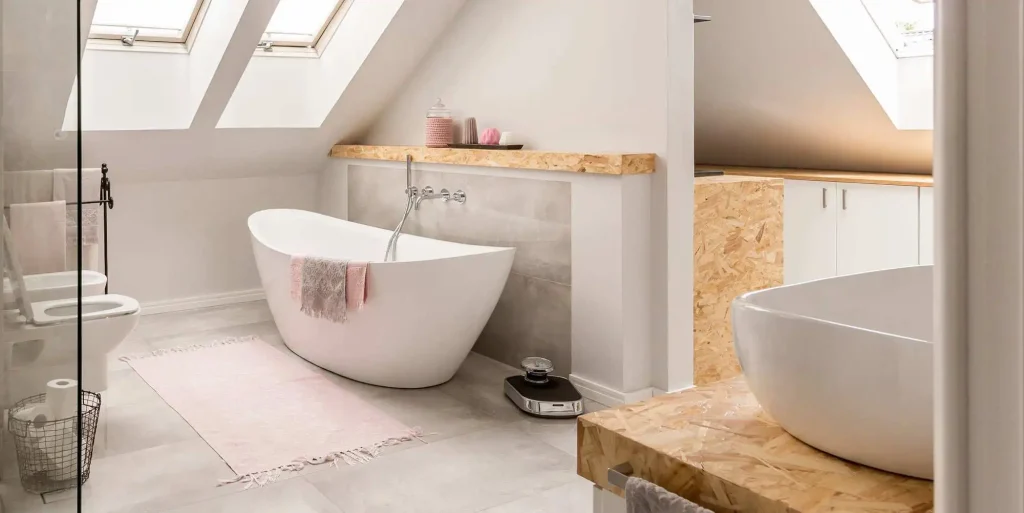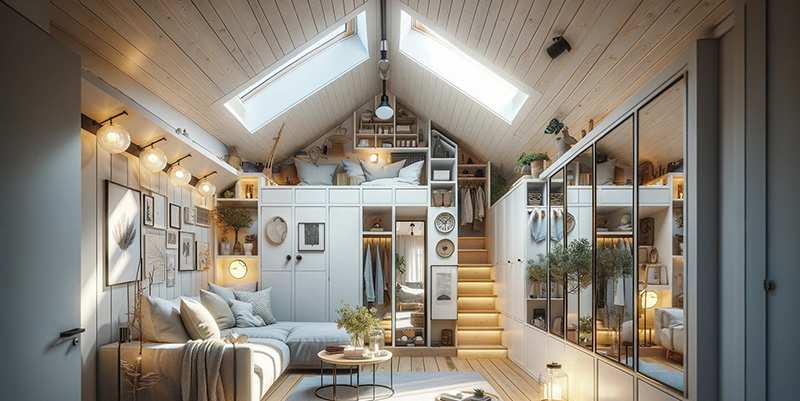Natural light can dramatically transform your loft conversion, making it feel more spacious and welcoming. Loft spaces, often tucked under roofs, can be at risk of feeling dim and enclosed, so making the most of available daylight is essential.
Not only does natural light create a pleasant living environment, but it also helps improve your well-being, positively affecting mood and productivity.
Maximising natural light also has practical advantages. Daylight reduces the need for artificial lighting during the day, which in turn cuts down energy consumption and electricity bills.
With careful planning and a few strategic decisions, you can ensure your loft conversion is bathed in light throughout the day.
Choosing the Right Windows
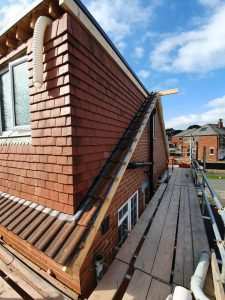
When selecting windows for your loft conversion, it’s crucial to choose the type that maximises light while complementing the structure of your home. Skylights are a popular option as they are installed directly into the roof, allowing light to pour in from above.
Dormer windows, on the other hand, extend vertically from the roof and can offer more headroom and ventilation, though they may not bring in as much light as skylights.
The placement of windows is equally important. Installing windows on the side of your home that receives the most sunlight will maximise exposure. East-facing windows catch the morning sun while south-facing windows receive the most daylight throughout the day.
Additionally, choosing energy-efficient glazing can ensure that your windows allow light in while minimising heat loss.
Strategic Use of Mirrors and Light Colours
Mirrors are an excellent tool for enhancing natural light in your loft. By strategically placing mirrors opposite windows, you can reflect sunlight deeper into the space, brightening even the darker corners.
A large, well-positioned mirror can also make the room feel bigger, adding to the sense of openness.
Choosing light colours for walls, ceilings, and flooring is another effective way to maximise light. Light-coloured surfaces reflect sunlight more efficiently than darker hues, which tend to absorb light.
Opt for shades of white, cream, or light grey for your interior décor to create an airy, illuminated atmosphere in your loft.
Open Plan Designs and Light Flow
An open-plan design is ideal for maximising light flow in your loft conversion. By reducing the number of internal walls, you allow light to travel freely throughout the space.
This design not only makes the loft feel more spacious but also ensures that daylight reaches all parts of the room.
You can use furniture and rugs to define different areas without the need for walls that might block light.
If you require room divisions, glass partitions are a stylish solution. Unlike solid walls, glass allows light to pass through, keeping the space bright and airy. Glass doors or frosted glass panels can also be used for privacy without sacrificing the overall flow of light in the loft.
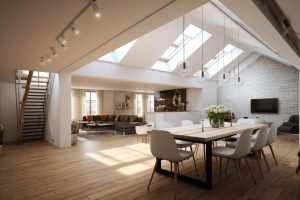
Installing Sun Tunnels
Sun tunnels are an excellent option if your loft has limited window opportunities due to structural constraints. These tubular devices capture sunlight from the roof and funnel it into the interior spaces of your loft.
Though smaller than skylights, sun tunnels can still provide a significant amount of natural light, making them ideal for areas that don’t easily accommodate windows.
In loft spaces where skylights or large windows aren’t feasible, sun tunnels provide an affordable and practical alternative.
They’re especially effective for lighting up hallways, bathrooms, or other spaces that are typically harder to illuminate.
Sun tunnels are also energy-efficient, using no electricity while brightening up your loft with natural light.
Enhancing Light with Artificial Solutions
While natural light is ideal, it’s not always possible to rely on it alone, especially during the evenings or on overcast days. Incorporating smart artificial lighting can help maintain a well-lit environment.
Opt for LED lights that mimic daylight tones, which can complement and enhance the natural light your loft receives during the day.
Layered lighting is key in loft conversions. Combining ambient, task, and accent lighting creates a versatile space that remains bright and functional at any time of day.
Dimmable lights and strategically placed lamps can allow you to control the mood and brightness, ensuring your loft always feels light and inviting.

Conclusion
Maximising natural light in your loft conversion is a combination of thoughtful design, window placement, and clever interior choices.
By using the right windows, light-coloured décor, and reflecting surfaces, you can create a bright and welcoming space.
Even in challenging spaces, solutions like sun tunnels and smart lighting can enhance the light levels and make your loft feel open and spacious.
Working with professionals will ensure your loft is designed to make the most of natural light, adding value and comfort to your home.


